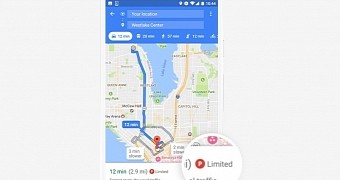Google Maps is upping the game, and it’s trying to not only get you to your destination in record time but also to tell you how hard finding a parking spot is going to be.
The chances are that if you’re going to a location you’ve visited before, you already know what to expect when it comes to parking spaces. But if you’re going to a new place, you’re going to need a little warning.
Rolling out for San Francisco, Miami, Boston, Chicago, Los Angeles, New York City, Philadelphia, San Diego, Tampa, Cleveland, Denver, Phoenix, Sacramento, Seattle, Minneapolis, Charlotte, Detroit, Atlanta, Orlando, Pittsburgh, St. Louis, Dallas, Washington, Houston and Portland, the new historical parking data will surely come in handy.
How does it work?
So how does Google do it? Unfortunately, it can’t tell you in real time how busy the parking lots in the area will be, but it can tell you how things have been there historically. Once you type in the address you’re going to, Google Maps will pull up a parking difficulty icon on the directions card. Ranked from limited to medium to easy, you’re at least getting a warning to know how to handle parking in that general area.
For instance, if Google Maps tells you there’s limited parking space, you might want to consider checking out a different street, or even parking on a different block and walking a bit just so you don’t spend an hour driving in circles, praying someone’s going to move their car.
The parking function on Google Maps compiles data from users that store location information on Google’s servers, much like it does with many of its other services. Before you get all upset about how Google uses your data, remember you probably signed up for it without even knowing because nobody reads those Terms.
This whole idea sounds great, and there’s a lot of hoping that it will reach more US cities and even cross borders and Oceans to reach the less fortunate Europeans who always seem to be the last to get the updates.

 14 DAY TRIAL //
14 DAY TRIAL //